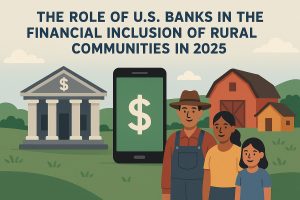Credit card rewards programs have revolutionized how people earn and redeem benefits in the US, providing opportunities to save on travel, shopping, and more. However, many cardholders fail to fully utilize these programs, leaving significant value untapped. By adopting specific strategies, you can maximize your rewards, ensuring your spending translates into meaningful returns.
Whether you’re new to credit card miles or a seasoned user, understanding the intricacies of rewards optimization can unlock a world of benefits. This guide explores actionable strategies to make the most of your credit card miles and rewards, helping you travel smarter, spend wisely, and enjoy greater savings.
Choosing the right credit card for your lifestyle

One of the most critical steps to optimize credit card rewards is choosing a card that aligns with your spending habits. Not all cards are created equal, and selecting the wrong one could mean missing out on lucrative rewards. Evaluate where most of your money goes—whether it’s groceries, travel, dining, or everyday purchases—and compare cards that offer the highest rewards for those categories.
For example, frequent travelers might benefit from co-branded airline cards offering miles on flights, while food enthusiasts could maximize cashback with dining-focused cards. Additionally, some cards provide rotating categories with elevated rewards each quarter. Staying aware of these changes and adjusting your spending accordingly ensures you maximize returns.
Beyond spending habits, consider annual fees and rewards redemption policies. High-annual-fee cards often come with exclusive perks, such as airport lounge access or free checked bags, which might outweigh the cost for frequent users. On the other hand, no-fee cards may suffice for those seeking straightforward rewards without extra frills.
Comparing reward programs
Reward structures vary significantly between credit cards. Some cards use points, while others offer miles or cashback. For frequent travelers, miles programs tied to major airlines may offer the best value, especially when paired with exclusive redemption opportunities for flights or upgrades. However, general points programs often provide greater flexibility, allowing cardholders to redeem rewards for travel, statement credits, or gift cards.
Ensure you compare programs based on point value and redemption options. For instance, some points are worth more when redeemed for travel rather than cash. Conducting thorough research before committing to a card will save you money and frustration later.
Strategies for maximizing rewards through smart spending
Many credit cards offer enticing sign-up bonuses to attract new customers. These bonuses often require meeting a minimum spending threshold within the first few months. To optimize rewards, plan your spending to align with these thresholds. For instance, schedule significant purchases, such as electronics or holiday expenses, to fall within the bonus-qualifying period.
Promotions also play a vital role in maximizing rewards. Credit card issuers frequently run limited-time offers, such as increased earning rates on specific categories or exclusive deals with partner merchants. Staying updated on these opportunities, typically communicated via email or cardholder apps, allows you to make informed spending decisions and earn more rewards.
Earning rewards with strategic planning
Another effective strategy is using multiple cards to cover various spending categories. For example, a travel card might earn extra miles on flights, while a cashback card could maximize returns on everyday purchases. By diversifying your card usage based on category-specific rewards, you can accumulate miles or points faster.
Additionally, consider linking your credit cards to loyalty programs offered by airlines, hotels, or retailers. Many issuers allow direct transfers of points to these programs, often at favorable conversion rates, further enhancing your rewards potential.
Redeeming miles and rewards effectively
Understanding the value of your rewards is crucial for optimizing their use. Miles, points, and cashback can vary significantly in value depending on how they are redeemed. For example, redeeming points for statement credits might yield lower value compared to using them for flights or hotel stays.
To maximize returns, aim for redemptions that offer the highest value per point or mile. Travel enthusiasts often find the best deals by booking flights or accommodations during off-peak periods, where fewer points are required. Similarly, look for reward program sweet spots, such as discounted redemption rates for certain destinations or cabin classes.
Redeem strategically for travel
Travelers should focus on redeeming miles and points for flights, upgrades, or hotel stays to maximize value. Programs like airline alliances allow flexibility in booking across multiple carriers, often yielding better deals. Researching and planning ahead ensures you secure the most cost-effective options.
For non-travel-related redemptions, explore gift cards, merchandise, or experiences offered by your card issuer. While these options might not always provide the same value as travel redemptions, they can still be worthwhile for cardholders with specific needs or preferences.
Avoiding common pitfalls with rewards programs
One of the most common mistakes in managing credit card rewards is overlooking expiration policies. Many miles or points have a limited validity period, leading to lost rewards if not redeemed in time. Staying aware of expiration dates and planning redemptions accordingly ensures you don’t forfeit your hard-earned benefits.
Setting reminders or frequently checking your rewards balance can help prevent expiration-related losses. Some cards also offer tools or alerts to keep track of your points and ensure timely usage.
Avoiding unnecessary fees
While credit card rewards can save money, improper management can result in fees that offset the benefits. For instance, carrying a balance on your card accrues interest, which may negate the value of rewards earned. Similarly, foreign transaction fees can erode savings when using your card abroad.
To avoid such pitfalls, pay off your balance in full each month and consider cards with no foreign transaction fees if you frequently travel internationally. Responsible management ensures that rewards remain a net positive for your finances.
Conclusion
Optimizing credit card miles and rewards in the US requires careful planning, strategic spending, and a thorough understanding of available programs. By aligning your card choices with your lifestyle, leveraging promotions, and redeeming rewards thoughtfully, you can unlock significant value and enjoy the full potential of your credit cards.
Remember, the key is to stay informed, track your rewards diligently, and adapt your strategy as your spending habits or travel goals evolve. With these strategies in mind, you’ll be well-equipped to make the most of your miles and rewards.






